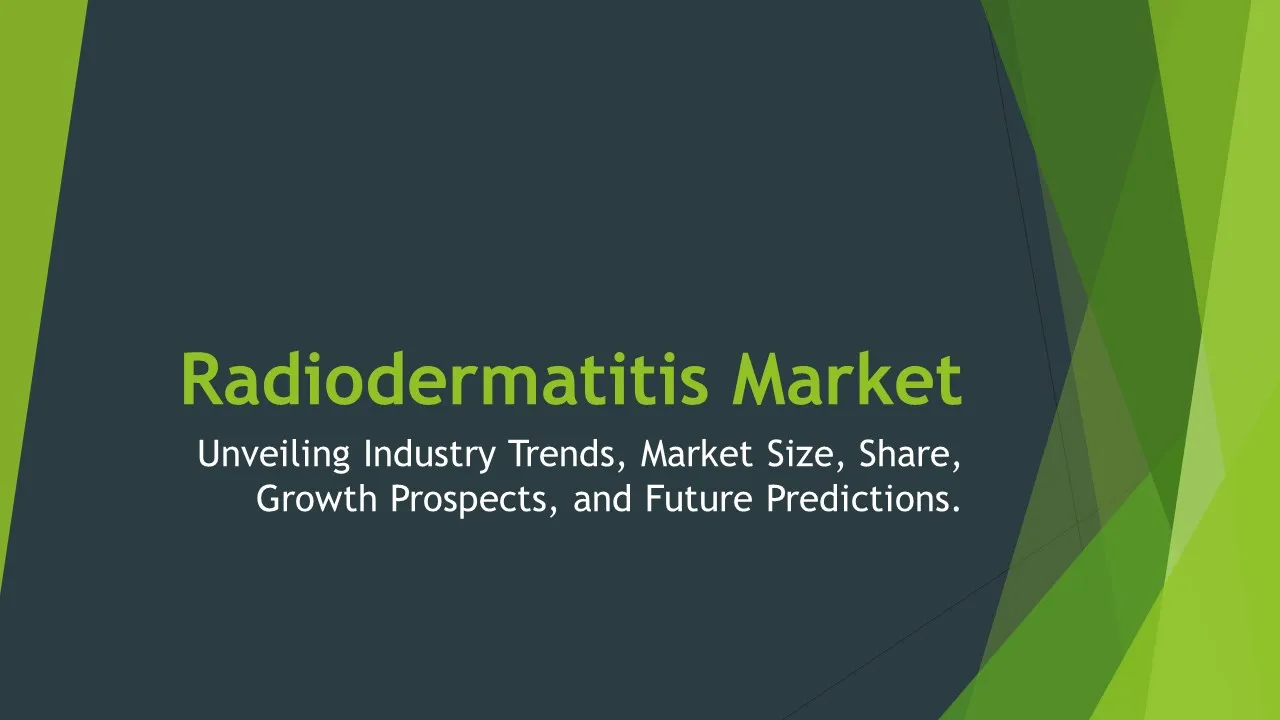Polio Vaccine Sales
Polio Vaccine Market Segments - by Product Type (Inactivated Polio Vaccine, Oral Polio Vaccine), End User (Hospitals, Clinics, Government Institutes, Others), Distribution Channel (Hospitals Pharmacies, Retail Pharmacies, Online Pharmacies), Age Group (Pediatric, Adult), and Region (North America, Europe, Asia Pacific, Latin America, Middle East & Africa) - Global Industry Analysis, Growth, Share, Size, Trends, and Forecast 2025-2035
- Report Preview
- Table Of Content
- Segments
- Methodology
Polio Vaccine Sales Market Outlook
The global Polio Vaccine market size is projected to reach USD 6.5 billion by 2035, growing at a CAGR of 6.3% from 2025 to 2035. The continual efforts by governments and health organizations to eradicate polio have been a significant growth factor for the market, leading to increased vaccination campaigns and public awareness programs. As the world strives to achieve full polio eradication, investments in vaccine development and distribution have escalated, driving the demand for both inactivated and oral polio vaccines. Additionally, the rise in vaccination coverage, particularly in developing nations, has amplified the need for accessible and effective polio vaccines, contributing to market growth. The emphasis on immunization as an essential component of public health strategies plays a pivotal role in boosting sales within this sector.
Growth Factor of the Market
One of the primary growth factors for the Polio Vaccine market is the increasing awareness regarding the importance of vaccination in preventing infectious diseases. As various health entities emphasize the significance of herd immunity, particularly in regions where polio remains a threat, campaigns have been augmented to ensure that vaccinations are widely accessible. Furthermore, technological advancements in vaccine formulation and storage are leading to more effective and easier-to-administer vaccines, thereby expanding their reach and acceptance among healthcare providers and patients alike. Legislative measures across various countries mandating vaccinations for school-age children are also expected to propel the demand for polio vaccines significantly. The partnership between public and private sectors for vaccine distribution ensures that there are fewer logistical barriers, allowing for a more efficient rollout of vaccination programs. Lastly, the resurgence of polio in certain regions has rekindled urgency for vaccination, reinforcing the focus on research and development within the sector.
Key Highlights of the Market
- The global Polio Vaccine market is expected to reach USD 6.5 billion by 2035, with a CAGR of 6.3%.
- Government initiatives and global health campaigns are significantly boosting vaccination rates.
- Technological advancements in vaccine production are improving vaccine efficacy and distribution.
- There is a growing demand for polio vaccines in emerging economies due to increased public health awareness.
- Legislative mandates for vaccinations in schools are driving the market further.
By Product Type
Inactivated Polio Vaccine:
The Inactivated Polio Vaccine (IPV) plays a pivotal role in the global effort to combat poliomyelitis, being one of the two main types of vaccines available in the market. Unlike the oral polio vaccine, IPV is administered through injection, providing an effective immunological response without the risk of vaccine-derived poliovirus. As a result, IPV is particularly appealing to healthcare providers, especially in regions where polio has been eradicated, or where booster immunizations are required. The increasing preference for IPV, driven by safety concerns and its effectiveness in preventing poliovirus infections, has contributed to its growing market share. Moreover, countries are increasingly investing in IPV as part of their national immunization programs, further enhancing its demand in the market.
Oral Polio Vaccine:
The Oral Polio Vaccine (OPV) continues to be a cornerstone in polio eradication strategies, particularly in low-income countries where the disease remains endemic. OPV is administered orally and is known for its ability to induce intestinal immunity, making it highly effective in preventing the transmission of poliovirus in communities. Its ease of administration allows for rapid mass immunization campaigns, which are critical in outbreak situations. Furthermore, the cost-effectiveness of OPV compared to IPV makes it the preferred choice for many governments and organizations focused on eradicating polio in resource-limited settings. However, the risk of vaccine-derived poliovirus, albeit rare, has raised some concerns, prompting health authorities to carefully evaluate the use of OPV in routine immunization schedules.
By End User
Hospitals:
Hospitals represent a significant segment of the Polio Vaccine market, serving as primary facilities for immunization programs. The centralized nature of hospitals enables them to efficiently manage vaccine distribution, facilitate vaccination campaigns, and monitor patient outcomes. Many hospitals have been proactive in organizing regular vaccination drives and ensuring that children receive their immunizations on time. The collaboration with public health departments further supports the hospitals' efforts in promoting polio vaccinations. Additionally, hospitals often provide educational resources to parents, increasing awareness and participation in vaccination initiatives, thereby contributing to a rise in polio vaccine uptake.
Clinics:
Clinics, both private and public, also play an essential role in administering polio vaccines, particularly in urban areas where access to hospitals may be limited. These facilities are often more accessible to the general population, making it easier for families to obtain vaccinations without the need for hospital admission or long waiting times. Clinics are particularly important in providing routine immunizations for children, including polio vaccines, as they offer a more personalized approach to healthcare. Furthermore, community health clinics often engage in outreach programs to educate families about the importance of vaccination, ensuring that higher immunization rates are achieved within the community.
Government Institutes:
Government institutes are pivotal in the coordination and implementation of polio vaccination strategies, especially in developing countries. These entities work in conjunction with international organizations, such as the World Health Organization (WHO), to facilitate nationwide vaccination campaigns and monitor polio incidence rates. Through policy development, funding, and resource allocation, government institutes ensure that vaccines are accessible to those in need. Their efforts are particularly crucial in areas where polio is still prevalent, as they help to mitigate outbreaks and protect vulnerable populations. Comprehensive vaccination programs spearheaded by government institutes contribute significantly to the reduction of polio cases worldwide.
Others:
Other end users in the Polio Vaccine market include non-governmental organizations (NGOs), educational institutions, and community health organizations. NGOs often play a vital role in delivering polio vaccines in remote and underserved areas, providing resources and logistics necessary for effective vaccination campaigns. Educational institutions also contribute by facilitating immunization drives and educating students and parents about the importance of vaccination. Community health organizations, on the other hand, engage in outreach initiatives to promote awareness and ensure that at-risk populations receive necessary vaccinations. These diverse end users collectively enhance the reach and impact of polio vaccination efforts globally.
By Distribution Channel
Hospital Pharmacies:
Hospital pharmacies are essential in the distribution of polio vaccines, particularly in ensuring that vaccines are stored and handled according to stringent safety protocols. These pharmacies are responsible for maintaining inventory and managing the supply chain to guarantee that vaccines are available when needed for both routine immunizations and emergency responses during polio outbreaks. The trained staff in hospital pharmacies ensures that the vaccines are administered correctly and that patients receive appropriate aftercare and information regarding potential side effects. Through their structured distribution processes, hospital pharmacies play a critical role in supporting vaccination efforts and enhancing patient safety.
Retail Pharmacies:
Retail pharmacies serve as convenient access points for individuals seeking polio vaccinations, particularly in urban and suburban areas. These pharmacies typically offer a broader range of vaccine types and provide flexibility in administration, appealing to a diverse population. The presence of trained pharmacists allows for immediate consultation, helping to address any concerns and questions regarding the vaccination process. Retail pharmacies often collaborate with health departments to engage in community outreach programs, which are essential in raising awareness about the importance of immunization and increasing overall vaccination rates. Their ability to operate in a more approachable setting facilitates a more extensive reach for polio vaccine distribution.
Online Pharmacies:
Online pharmacies have begun to play an increasingly significant role in the distribution of polio vaccines, particularly as telehealth services rise in popularity. While the administration of vaccines typically requires an in-person visit, online pharmacies facilitate the scheduling of vaccinations, allow for easy access to vaccination information, and provide reminders for follow-up doses. The convenience of accessing online platforms appeals to many individuals, particularly those with mobility challenges or those living in remote areas. As the healthcare landscape continues to evolve toward digital solutions, the integration of online pharmacies into the polio vaccination process is likely to grow, helping to enhance accessibility and improve overall public health outcomes.
By Age Group
Pediatric:
The pediatric segment represents the largest share of the Polio Vaccine market, as vaccination efforts primarily focus on children under the age of five. This age group is particularly vulnerable to polio infections, making timely immunization crucial for preventing disease outbreaks. Pediatric vaccination programs are often established in alignment with national immunization schedules, ensuring that children receive the necessary doses at appropriate intervals. Health organizations and governments actively promote polio vaccination campaigns targeted at this demographic, driving awareness among parents about the importance of vaccinating their children. The widespread acceptance of pediatric immunization is further supported by healthcare providers, who emphasize the benefits of early vaccination in safeguarding children's health.
Adult:
The adult age group is increasingly recognized as an essential segment for polio vaccination, particularly for those who may not have received complete vaccinations during childhood. As polio eradication efforts progress, adults who travel to endemic regions or work in healthcare may require booster doses to maintain immunity. Additionally, public health campaigns are being developed to raise awareness among adults regarding the importance of polio vaccinations, especially in the face of potential outbreaks. The adoption of catch-up vaccination programs to address gaps in childhood immunization further reinforces the need for adult vaccinations. With the growing emphasis on lifelong immunity, the adult segment is gaining attention in the polio vaccine market, contributing to overall market growth.
By Region
The North American region is anticipated to lead the Polio Vaccine market, accounting for approximately 30% of the total market share by 2035. The robust healthcare infrastructure, high vaccination coverage rates, and extensive public health awareness campaigns contribute to the strong demand for polio vaccines in this region. The emphasis on eradicating poliomyelitis, coupled with stringent health regulations, ensures that polio vaccination remains a priority among healthcare providers and the population. Additionally, North America's commitment to global health initiatives, including support for polio eradication in endemic countries, reinforces its significant role in shaping the future landscape of the polio vaccine market. The CAGR for North America is projected at 5.8%, reflecting steady growth in vaccine uptake.
Europe is also expected to contribute significantly to the Polio Vaccine market, with an estimated market share of 25% by 2035. The continuous efforts of various European health agencies to ensure comprehensive immunization coverage among children and targeted vaccination campaigns for adults at risk have been effective in maintaining low incidence rates of polio. The collaborative approach taken by countries within the European Union, alongside partnerships with global health organizations, has enhanced vaccine distribution and access. Furthermore, the emphasis on public health education continues to play a pivotal role in driving vaccination rates, supporting the overall growth of the market in this region.
Opportunities
One of the primary opportunities in the Polio Vaccine market lies in the growing focus on research and development aimed at creating more effective and versatile vaccines. Innovative vaccine formulations, such as combined immunizations that protect against multiple diseases, could enhance the appeal of polio vaccines to healthcare providers and parents alike. As governments and organizations allocate more resources toward vaccine R&D, the potential for breakthroughs that increase efficacy and safety opens new avenues for market growth. Additionally, the integration of advanced technologies, such as mRNA vaccine platforms, can expedite the development process and improve the response to emergent polio strains, positioning the market for future resilience against outbreaks.
The rising demand for vaccination in developing regions presents an immense opportunity for stakeholders in the Polio Vaccine market. As countries aim to achieve and maintain high immunization coverage, there is a growing need for accessible and affordable vaccines. Partnerships between governments, international organizations, and pharmaceutical companies can facilitate outreach programs to educate and engage communities, further driving vaccine uptake. The global commitment to the Sustainable Development Goals (SDGs), particularly those focused on health and well-being, also encourages investment in vaccination programs, expanding the market potential. By leveraging these opportunities, companies can enhance their market presence and contribute to the global effort to eradicate polio.
Threats
Despite the optimistic outlook for the Polio Vaccine market, several threats could hinder its growth. One significant threat is the emergence of anti-vaccine sentiments, which have been spreading in various regions due to misinformation and distrust in healthcare systems. This opposition to vaccinations can lead to decreased coverage rates, making it difficult to achieve herd immunity and increasing the risk of polio outbreaks. The resurgence of polio in previously polio-free areas has occurred in some countries, which can be attributed to low vaccination rates fueled by such sentiments. Addressing these challenges requires strategic communication campaigns and community engagement initiatives that foster trust and promote the benefits of vaccination.
Cost and access remain primary restraining factors in the Polio Vaccine market, particularly in low-income countries where financial constraints hinder the procurement of vaccines. The affordability of vaccines is crucial for effective immunization programs, and any fluctuations in pricing or shortages in supply can pose significant challenges. Additionally, logistical barriers related to vaccine storage and transportation can impede the timely distribution of vaccines, especially in remote regions. To overcome these challenges, stakeholders must focus on innovative supply chain solutions and collaborative efforts to ensure that vaccines reach those who need them most, thus enhancing overall immunization efforts.
Competitor Outlook
- Sanofi Pasteur
- GlaxoSmithKline plc
- Bharat Biotech
- Serum Institute of India
- Merck & Co.
- Pfizer Inc.
- Johnson & Johnson
- Vaxart, Inc.
- China National Pharmaceutical Group (Sinopharm)
- Emergent BioSolutions Inc.
- Walvax Biotechnology Co., Ltd.
- Berna Biotech AG
- Inovio Pharmaceuticals, Inc.
- Novartis AG
- Hilleman Laboratories
The competitive landscape of the Polio Vaccine market is characterized by a mix of established pharmaceutical companies and emerging biotech firms that are actively engaged in vaccine development and distribution. The presence of major players, such as Sanofi Pasteur and GlaxoSmithKline, underscores the significance of established brands with extensive experience in vaccine production and a strong global distribution network. These companies have a comprehensive product portfolio that includes both inactivated and oral polio vaccines, allowing them to cater to diverse market needs and preferences. They are also heavily invested in research and development, ensuring that their offerings remain innovative and effective in the face of evolving health challenges.
Emerging players, such as Vaxart, Inc. and Hilleman Laboratories, are leveraging technological advancements to develop next-generation vaccines that may provide improved efficacy and safety. These companies often focus on niche markets or innovative approaches, such as oral delivery systems or mRNA technology, which can disrupt traditional vaccine development paradigms. Their agility and adaptability enable them to respond quickly to market demands and shifting public health priorities. Collaborations between established firms and these emerging companies are increasingly common, as both parties seek to combine their strengths to address the global need for polio vaccination and tackle potential outbreaks effectively.
Another central feature of the competitive landscape is the focus on partnerships and collaborations among industry players, governmental agencies, and global health organizations. These alliances facilitate the sharing of resources, knowledge, and expertise, ultimately enhancing the efficiency of vaccination campaigns and public health initiatives. For instance, partnerships between pharmaceutical companies and organizations like the World Health Organization (WHO) allow for the effective distribution of vaccines in endemic regions and improve coverage rates. This synergy is vital for sustaining efforts to eradicate polio and underscores the importance of collaboration in achieving public health goals.
1 Appendix
- 1.1 List of Tables
- 1.2 List of Figures
2 Introduction
- 2.1 Market Definition
- 2.2 Scope of the Report
- 2.3 Study Assumptions
- 2.4 Base Currency & Forecast Periods
3 Market Dynamics
- 3.1 Market Growth Factors
- 3.2 Economic & Global Events
- 3.3 Innovation Trends
- 3.4 Supply Chain Analysis
4 Consumer Behavior
- 4.1 Market Trends
- 4.2 Pricing Analysis
- 4.3 Buyer Insights
5 Key Player Profiles
- 5.1 Merck & Co.
- 5.1.1 Business Overview
- 5.1.2 Products & Services
- 5.1.3 Financials
- 5.1.4 Recent Developments
- 5.1.5 SWOT Analysis
- 5.2 Novartis AG
- 5.2.1 Business Overview
- 5.2.2 Products & Services
- 5.2.3 Financials
- 5.2.4 Recent Developments
- 5.2.5 SWOT Analysis
- 5.3 Pfizer Inc.
- 5.3.1 Business Overview
- 5.3.2 Products & Services
- 5.3.3 Financials
- 5.3.4 Recent Developments
- 5.3.5 SWOT Analysis
- 5.4 Vaxart, Inc.
- 5.4.1 Business Overview
- 5.4.2 Products & Services
- 5.4.3 Financials
- 5.4.4 Recent Developments
- 5.4.5 SWOT Analysis
- 5.5 Bharat Biotech
- 5.5.1 Business Overview
- 5.5.2 Products & Services
- 5.5.3 Financials
- 5.5.4 Recent Developments
- 5.5.5 SWOT Analysis
- 5.6 Sanofi Pasteur
- 5.6.1 Business Overview
- 5.6.2 Products & Services
- 5.6.3 Financials
- 5.6.4 Recent Developments
- 5.6.5 SWOT Analysis
- 5.7 Berna Biotech AG
- 5.7.1 Business Overview
- 5.7.2 Products & Services
- 5.7.3 Financials
- 5.7.4 Recent Developments
- 5.7.5 SWOT Analysis
- 5.8 Johnson & Johnson
- 5.8.1 Business Overview
- 5.8.2 Products & Services
- 5.8.3 Financials
- 5.8.4 Recent Developments
- 5.8.5 SWOT Analysis
- 5.9 GlaxoSmithKline plc
- 5.9.1 Business Overview
- 5.9.2 Products & Services
- 5.9.3 Financials
- 5.9.4 Recent Developments
- 5.9.5 SWOT Analysis
- 5.10 Hilleman Laboratories
- 5.10.1 Business Overview
- 5.10.2 Products & Services
- 5.10.3 Financials
- 5.10.4 Recent Developments
- 5.10.5 SWOT Analysis
- 5.11 Serum Institute of India
- 5.11.1 Business Overview
- 5.11.2 Products & Services
- 5.11.3 Financials
- 5.11.4 Recent Developments
- 5.11.5 SWOT Analysis
- 5.12 Emergent BioSolutions Inc.
- 5.12.1 Business Overview
- 5.12.2 Products & Services
- 5.12.3 Financials
- 5.12.4 Recent Developments
- 5.12.5 SWOT Analysis
- 5.13 Inovio Pharmaceuticals, Inc.
- 5.13.1 Business Overview
- 5.13.2 Products & Services
- 5.13.3 Financials
- 5.13.4 Recent Developments
- 5.13.5 SWOT Analysis
- 5.14 Walvax Biotechnology Co., Ltd.
- 5.14.1 Business Overview
- 5.14.2 Products & Services
- 5.14.3 Financials
- 5.14.4 Recent Developments
- 5.14.5 SWOT Analysis
- 5.15 China National Pharmaceutical Group (Sinopharm)
- 5.15.1 Business Overview
- 5.15.2 Products & Services
- 5.15.3 Financials
- 5.15.4 Recent Developments
- 5.15.5 SWOT Analysis
- 5.1 Merck & Co.
6 Market Segmentation
- 6.1 Polio Vaccine Sales Market, By End User
- 6.1.1 Hospitals
- 6.1.2 Clinics
- 6.1.3 Government Institutes
- 6.1.4 Others
- 6.2 Polio Vaccine Sales Market, By Age Group
- 6.2.1 Pediatric
- 6.2.2 Adult
- 6.3 Polio Vaccine Sales Market, By Product Type
- 6.3.1 Inactivated Polio Vaccine
- 6.3.2 Oral Polio Vaccine
- 6.4 Polio Vaccine Sales Market, By Distribution Channel
- 6.4.1 Hospitals Pharmacies
- 6.4.2 Retail Pharmacies
- 6.4.3 Online Pharmacies
- 6.1 Polio Vaccine Sales Market, By End User
7 Competitive Analysis
- 7.1 Key Player Comparison
- 7.2 Market Share Analysis
- 7.3 Investment Trends
- 7.4 SWOT Analysis
8 Research Methodology
- 8.1 Analysis Design
- 8.2 Research Phases
- 8.3 Study Timeline
9 Future Market Outlook
- 9.1 Growth Forecast
- 9.2 Market Evolution
10 Geographical Overview
- 10.1 Europe - Market Analysis
- 10.1.1 By Country
- 10.1.1.1 UK
- 10.1.1.2 France
- 10.1.1.3 Germany
- 10.1.1.4 Spain
- 10.1.1.5 Italy
- 10.1.1 By Country
- 10.2 Asia Pacific - Market Analysis
- 10.2.1 By Country
- 10.2.1.1 India
- 10.2.1.2 China
- 10.2.1.3 Japan
- 10.2.1.4 South Korea
- 10.2.1 By Country
- 10.3 Latin America - Market Analysis
- 10.3.1 By Country
- 10.3.1.1 Brazil
- 10.3.1.2 Argentina
- 10.3.1.3 Mexico
- 10.3.1 By Country
- 10.4 North America - Market Analysis
- 10.4.1 By Country
- 10.4.1.1 USA
- 10.4.1.2 Canada
- 10.4.1 By Country
- 10.5 Polio Vaccine Sales Market by Region
- 10.6 Middle East & Africa - Market Analysis
- 10.6.1 By Country
- 10.6.1.1 Middle East
- 10.6.1.2 Africa
- 10.6.1 By Country
- 10.1 Europe - Market Analysis
11 Global Economic Factors
- 11.1 Inflation Impact
- 11.2 Trade Policies
12 Technology & Innovation
- 12.1 Emerging Technologies
- 12.2 AI & Digital Trends
- 12.3 Patent Research
13 Investment & Market Growth
- 13.1 Funding Trends
- 13.2 Future Market Projections
14 Market Overview & Key Insights
- 14.1 Executive Summary
- 14.2 Key Trends
- 14.3 Market Challenges
- 14.4 Regulatory Landscape
Segments Analyzed in the Report
The global Polio Vaccine Sales market is categorized based on
By Product Type
- Inactivated Polio Vaccine
- Oral Polio Vaccine
By End User
- Hospitals
- Clinics
- Government Institutes
- Others
By Distribution Channel
- Hospitals Pharmacies
- Retail Pharmacies
- Online Pharmacies
By Age Group
- Pediatric
- Adult
By Region
- North America
- Europe
- Asia Pacific
- Latin America
- Middle East & Africa
Key Players
- Sanofi Pasteur
- GlaxoSmithKline plc
- Bharat Biotech
- Serum Institute of India
- Merck & Co.
- Pfizer Inc.
- Johnson & Johnson
- Vaxart, Inc.
- China National Pharmaceutical Group (Sinopharm)
- Emergent BioSolutions Inc.
- Walvax Biotechnology Co., Ltd.
- Berna Biotech AG
- Inovio Pharmaceuticals, Inc.
- Novartis AG
- Hilleman Laboratories
- Publish Date : Jan 21 ,2025
- Report ID : PH-68111
- No. Of Pages : 100
- Format : |
- Ratings : 4.5 (110 Reviews)









